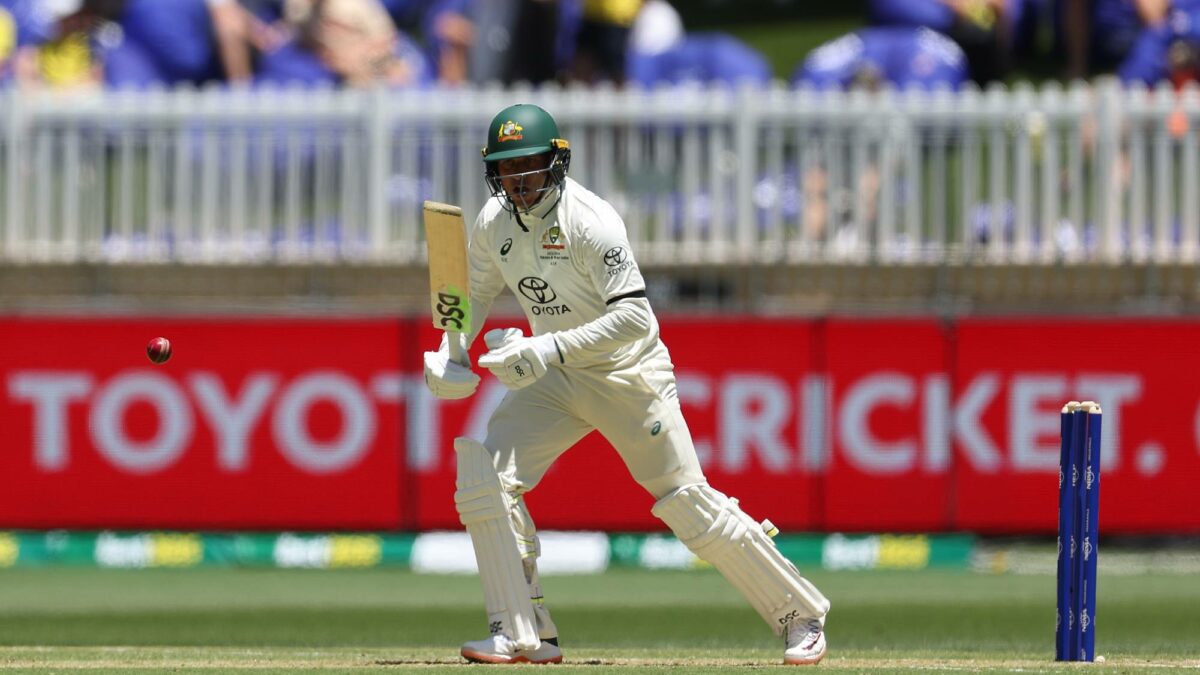The Australian cricketing community appears to be suffering a collective meltdown. The cause? Our men’s batting line-up, or more specifically, the top order.
Australia achieved what looked on paper to be a comfortable 159-run victory over the West Indies in Bridgetown last week.
But to the naked eye, vision of Sam Konstas and Cameron Green playing like cats on a hot tin roof, before being thrown mercilessly to the floor by a fired-up Jayden Seales and Shumar Joseph, has prompted panic stations down under.
“Leading into the Australian series at home, how is the top three going to shape up?” asked Greg Blewett after Day 1. “Who’s going to bat at No. 3? To me, Cameron Green isn’t the answer.”
Australia will likely come away with a series win over the West Indies this winter, regardless of how its top order performs. But this will be the team’s last chance to nail down its batting line-up before the old enemy comes to its shores, and as Ian Chappell told Allan Border in 1984 on his ascension to captain, “You can do anything you like, but don’t lose to the Poms.”
Australia coach, the ever cool and calm Andrew McDonald, has come to the defence of his beleaguered side.
“The players are the harshest critics really when all is said and done,” he told reporters after the match. The coach called for supporters and critics alike to have some patience, particularly when assessing the still pubescent Konstas at the crease. “That’s all we ask for – a bit of patience and time with a young player coming into Test cricket.”
McDonald’s efforts to protect his youngest disciple are commendable, though akin to asking a hungry lion to take sympathy on an injured zebra lagging behind the herd.
Konstas and Usman Khawaja have both failed in each innings of the second Test to add to the malaise though.
Criticisms of Australia’s batting vanguard are not without substance mind you. In 2022, they averaged 45.94 runs per innings. The following year this dropped to 39.64, before bottoming out at 27.82 in 2024, a figure consistent with this year’s averages.
The rot appears to have truly set in with the retirement of the sublimely durable David Warner. Though a divisive character with the public, it is unarguable Warner’s continued presence at the top of the order provided stability and value in equal measure between 2011 and 2024.
Since his departure, however, the Australian selectors appear to have been playing a rather spasmodic game of musical chairs with the batting order.
The moves since Warner’s departure are as follows: Smith to opener and Green in at four, Green’s subsequent withdrawal with a sore back that pushed Smith back to four and brought Nathan McSweeney in as opener, McSweeney being dropped and 19-year-old prodigy Sam Konstas selected to open in his stead, Mitchell Marsh removed from number six to make way for Beau Webster, Konstas being dropped and Head moved up to open from number five while Inglis slotted in to take his place…
(Takes deep breath)
… Inglis then being dropped for Green who moved into number three and Labuschagne filling in as opener, before Labuschagne was dropped for Konstas as opener and Inglis replacing Smith after his finger nearly snapped off, only for Inglis to then be left out to accommodate the returning Smith once more at four. All of this, in a matter of 18 months.
It stands in stark contrast to the glory days of Hayden, Langer, Ponting, Waugh, Waugh, Martyn and Gilchrist, a line-up which remained unchanged, and suffocated all and sundry under a mountain of runs, in a similar timeframe.
It is not just the Australian selectors who are being blamed for the top orders malaise. The focus on T20 cricket, neglect of the Sheffield Shield, the poor performance of the national batting coach Michael Di Venuto, a vacuum of talent left in the wake of Will Pucovski’s premature retirement and Phillip Hughes tragic death, the advanced age of the team, and even their lack of moral fibre, aka their refusal to sledge and “woke” political views, have been raised as reasons for their lack of runs.
Any credit to the West Indian bowlers and those of other nations is of course acknowledged in commentary boxes, pubs and group chats, albeit reluctantly and only as a matter of courtesy rather than sincerity.
But while Australian’s raid supermarket shelves and descend into bomb shelters at the thought of a looming home Ashes loss to England’s Bazball brigade, it may do them well to look over the garden fence and see how their neighbours are faring. They might find that the cricketing world is also in the grips of a severe and lengthy run drought.
Test batting averages have dropped from just shy of 36 runs per innings in 2009 to just 27 runs per innings in 2021.
Furthermore, between 2000 and 2005, 22 per cent of Test innings included a score of over 400. Between 2018 and 2022 this had fallen to just 13 per cent. Memories of grinding, attritional run-fests on flat pitches, epitomised in Alastair Cook’s 244* on a lifeless MCG deck in 2017, are long gone. All that is left is Scott Boland’s mind-blowing 49 wickets in his first nine Tests at just 12.63!

Sam Konstas. (Photo by Morgan Hancock – CA/Cricket Australia via Getty Images)
Indeed, this shift in the balance of power between batters and bowlers has been rather pronounced in Australia.
According to Khawaja the application of an additional layer of lacquer to the Kookaburra ball, the rise of wobble seem bowling, and the production of increasingly greener pitches, all coming into effect since 2020, have been the decisive factors in inducing bowling with sharper deviation off the pitch that makes batting so difficult.
“You just put them (balls) down and they go in all directions,” he told The Grade Cricketer podcast in 2024. “That wasn’t around back in the day.”
Despite this, Australia have been more adept than anyone at sourcing runs. Andrew McGlashan recently published an article on ESPN Cricinfo that included a comparison of the batting averages of the top nine Test playing nations across the last two World Test Championship cycles.
While the article focused on the nadir being experienced by West Indian batters (they averaged just 22.54 runs per innings), many might be surprised to find Australia sitting comfortably at the top of the pile (35.27), ahead of England (31.88), Pakistan (31.32), New Zealand (31.44), India (30.82), Sri Lanka (29.95), South Africa (27.44) and Bangladesh (23.05).
That is not to deny the vulnerabilities plaguing Australia’s top order. If Cummins’ team plans on retaining the Ashes later this year his selectors need to ditch their game of musical chairs and create some stability on the team sheet. On batting talent alone Australia already looks outgunned by a rampant England, leaving it once again for the bowlers to save the day.
But perhaps that’s the point. For all our obsession with runs being churned out by the top order, for our hope of recreating the glory days of Hayden, Lander and Ponting, the path to Ashes glory may now lie not with those who wield the blade, but those who carry the ball.

![Akash Deep bags maiden five-fer as Jamie Smith holes out to deep square leg after valiant 88 in ENG vs IND 2025 2nd Test [Watch]](https://joelgalvan.site/wp-content/uploads/2025/07/cfe1a-17518164401327-1920-768x547.jpg)




